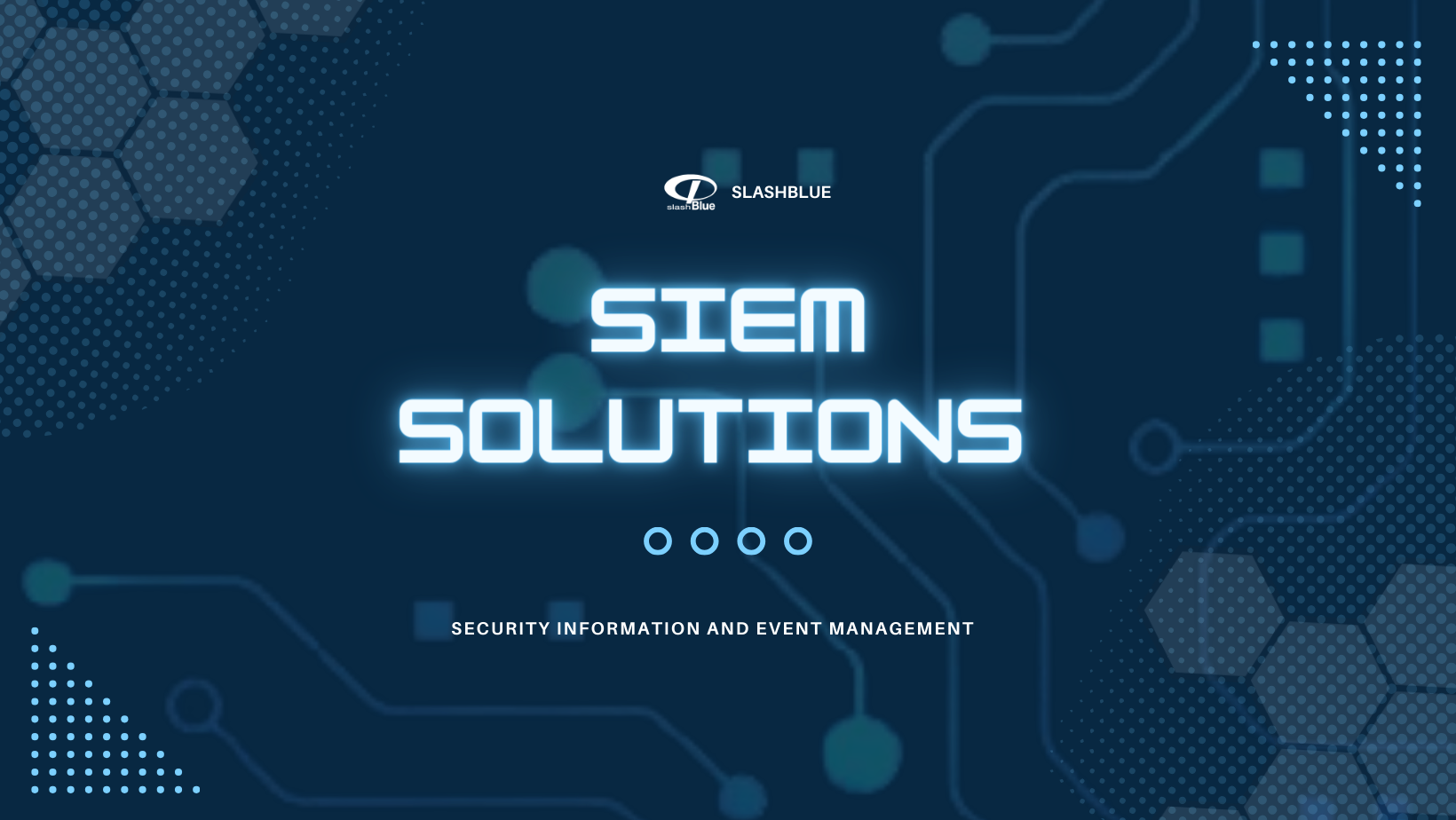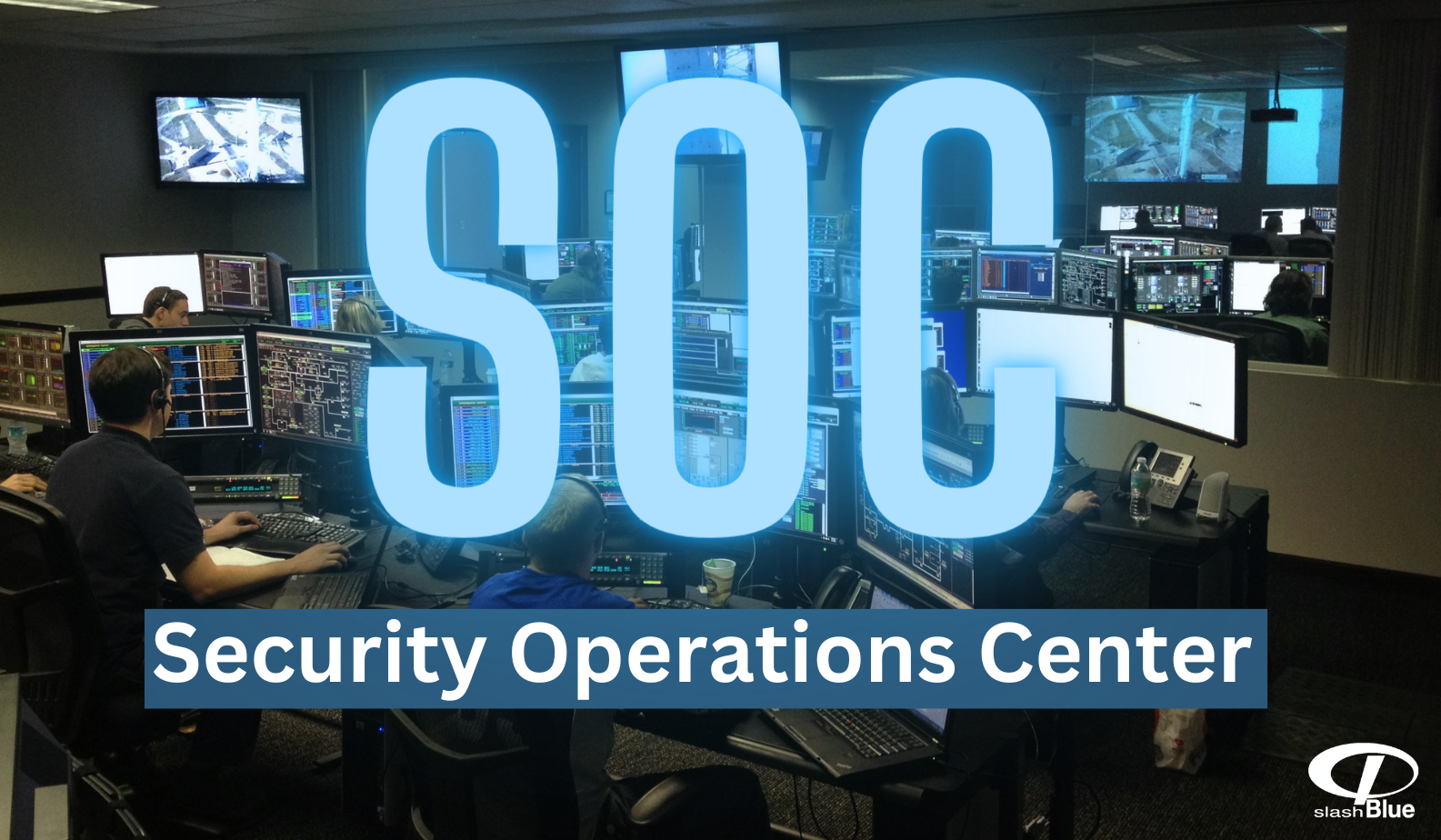In today's digital age, businesses rely heavily on technology to operate efficiently and effectively. However, this increased reliance on technology also exposes organizations to a growing number of cyber threats. Shockingly, even with existing cybersecurity measures in place, 61% of businesses fell victim to cyberattacks last year. This alarming statistic underscores the urgent need for a robust security management system that focuses on centralized log management, security monitoring, and event management.
One of the most effective ways to detect threats is through the use of a Security Information and Event Management (SIEM) tool. A SIEM solution helps an organization detect threats and vulnerabilities by continuously monitoring network and event data for suspicious or abnormal activities. Security alerts detected by the SIEM are them escalated to a Security Operations Center (SOC) for investigation and if needed remediation.
In this blog, we'll shed light on the importance of advanced SIEM systems and how they can bolster your organization's security posture.
Let's delve into three crucial cybersecurity capabilities for your organization:
Assess Threats to Business: Evaluate your ability to monitor security events in real-time, detect anomalies, and proactively respond to potential breaches, whether they originate from external threats or insiders.
Resolve Incidents Quickly: Assess your incident response capabilities, including timely notifications, effective remediation plans, and comprehensive post-incident analysis. Features like log management systems, security alerts, advanced threat intelligence, and security event correlation all contribute to quick incident resolution.
Navigate Compliance: SIEM technology can help organizations stay compliant with fast-evolving regulatory requirements by providing audit trails and reports, simplifying the compliance journey.
Security events can have severe consequences on various aspects of a business, potentially leading to financial losses, reputation damage, operational disruptions, and intellectual property (IP) theft. Let's explore the repercussions of each of these cybersecurity impacts:
Financial Loss:
Cyberattacks can result in significant financial losses, including direct financial theft, litigation costs, reputation damage, and regulatory fines and penalties.
Reputation Damage:
Breaches that expose customer data erode trust and reputation, causing customer churn and difficulties in acquiring new customers.
Negative media coverage highlighting security vulnerabilities can tarnish a company's image, which can be challenging and resource-intensive to recover from.
Operational Disruptions:
Security incidents can disrupt critical business operations, leading to downtime and significant productivity loss.
Ransomware attacks, in particular, can lock access to essential files, systems, or networks, paralyzing day-to-day activities.
Intellectual Property (IP) Theft:
Competitors or threat actors may exploit security weaknesses to steal valuable intellectual property, resulting in competitive disadvantages and compromised innovation.
Now, let's delve into what a SIEM tool provides:
What is SIEM Technology?
Businesses encounter numerous cybersecurity challenges, and safeguarding your organization's confidential project documents, innovative technologies, and financial data is paramount. A Security Information and Event Management (SIEM) solution acts as a vigilant guardian, centralizing and streamlining the information required to defend your business.
SIEMs prioritize security, seamlessly integrate with other products, and alleviate the burden on internal teams by simplifying event management, real-time monitoring, compliance reports, alerting, and much more. Don't let the protection of your business become a secondary priority. In addition to the information we've shared, SIEM tools offer the following advantages:
Saves Internal Team Capacity: Enables your internal teams to focus on the core needs of your organization.
Streamlines Compliance Management: Simplifies compliance requirements and reporting.
Safeguards Valuable Assets: Protects your organization's most valuable assets.
Efficient Threat Response: Creates a more efficient process to respond to cyber threats, reducing the need for manual tasks.
Minimizes Operational Downtime: Helps minimize operational disruptions caused by security incidents.
Choosing a SIEM solution that is easy to implement and maintain is crucial. Equally important is selecting a SIEM that offers advanced analytics and utilizes artificial intelligence for data aggregation and advanced threat detection. Another important consideration is how the SIEM software integrates with other products in your technology stack.
Artificial Intelligence and SIEM Monitoring
Artificial Intelligence (AI) offers a plethora of benefits in SIEM monitoring.
Real-time Threat Detection: AI-driven SIEM solutions excel in real-time threat detection by continuously monitoring the network and analyzing vast amounts of data. This rapid analysis can identify anomalies and patterns that would be nearly impossible for human operators to detect. By doing so, organizations can swiftly respond to threats, mitigating potential damage before it occurs.
Enhanced Predictive Analytics: AI's machine learning capabilities allow SIEM systems to develop predictive models. By examining historical data and identifying trends, AI can predict potential security risks and vulnerabilities, helping organizations take proactive measures to protect their infrastructure.
Reduced False Positives: One of the common challenges with traditional SIEMs is the generation of numerous false alarms, which can overwhelm security teams and hinder their ability to respond effectively. AI-based SIEM solutions excel in reducing false positives by learning from past incidents and refining their detection mechanisms.
Automation of Routine Tasks: AI can handle repetitive, routine tasks with ease. In SIEM monitoring, this means automating many time-consuming processes, such as log analysis, incident triage, and response. This automation not only reduces the workload on security teams but also ensures a faster and more consistent response to security incidents.
Scalability and Adaptability: AI-powered SIEM systems can easily scale to meet the growing needs of an organization. They can handle vast amounts of data and adapt to new threats as they emerge. This scalability is essential in today's dynamic cybersecurity environment.
Improved User and Entity Behavior Analytics (UEBA): UEBA is crucial for detecting insider threats and other complex attacks. AI can develop baseline behavior profiles for users and entities and trigger alerts when deviations occur, making it a powerful tool for identifying potential threats from both inside and outside the organization.
Threat Intelligence Integration: AI-driven SIEMs can seamlessly integrate threat intelligence feeds, enhancing their ability to identify known threats and emerging attack techniques. By staying up-to-date with the latest threat intelligence, organizations can better protect their assets.
What is a SOC?
A Security Operations Center (SOC) is a centralized facility or team responsible for monitoring, detecting, responding to, and mitigating cybersecurity threats and incidents within an organization. Think of it as the nerve center of your organization's cybersecurity efforts, where experts are constantly on the lookout for any signs of security breaches or anomalies.
Key Functions of a SOC
Continuous Monitoring: A SOC operates 24/7, monitoring the organization's IT environment in real-time. This includes networks, servers, endpoints, databases, applications, and other critical assets.
Threat Detection: The primary role of a SOC is to detect any signs of security threats or breaches. This involves the use of various tools and technologies, such as intrusion prevention systems, security information and event management (SIEM) systems, and advanced threat intelligence.
Incident Response: When a security related events are detected, the SOC team takes immediate action to respond to and mitigate the threat. This may involve isolating compromised systems, patching vulnerabilities, and initiating recovery procedures.
Investigation and Analysis: SOC analysts conduct in-depth investigations where they analyze log data to understand the scope and impact of security incidents. They determine the source of the threat, its objectives, and the potential damage caused.
Forensics and Reporting: In the event of a security breach, a SOC performs digital forensics to gather evidence for legal and compliance reporting. They also generate incident reports for internal and external stakeholders.
Security Enhancement: A SOC is not just reactive; it also plays a proactive role in improving an organization's security posture. This includes recommending enhancements to security workflows, providing training and awareness programs, and ensuring that security policies and procedures are up-to-date.
Why Does Your Organization Need a SOC?
Early Threat Detection: A SOC is equipped with advanced tools and techniques to identify security threats at an early stage. This allows organizations to respond before significant damage occurs.
Timely Incident Response: When a security incident occurs, a SOC can swiftly respond to mitigate the impact, reducing downtime and potential data breaches.
Compliance and Reporting: Many industries have regulatory requirements for data protection and cybersecurity. A SOC helps organizations maintain compliance by providing the necessary documentation and evidence of security measures.
Peace of Mind: With a SOC in place, organizations can focus on their core business activities without constantly worrying about cybersecurity threats. This peace of mind is invaluable in today's threat landscape.
Cost Savings: Detecting and mitigating security incidents early can save organizations from the high costs associated with data breaches, legal liabilities, and reputation damage.
In conclusion, the need for a multi-layered security infrastructure has never been more pressing, and SIEM solutions play a pivotal role in mitigating business risk. These systems reduce the strain on your internal IT staff and effectively safeguard your organization from cyber threats through real-time monitoring, threat detection, network security monitoring, incident response, and compliance management. Paired with industry expertise and security analytics from slashBlue, your business will be well protected from cyber threats.
At slashBlue, we are well versed in deploying SIEM systems and partner with "Best in Class" SIEM vendors. In-house security teams provide real time security monitoring that analyzes log and event data for faster threat detection and remediation.
Discover how slashBlue can implement and monitor your environment using a SIEM.





